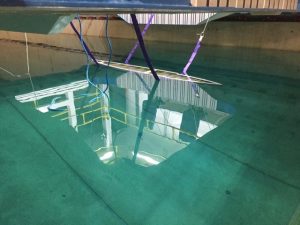Over the last 9 months we designed, programmed and built a 1m long autonomous sailing robot, to compete in the four challenges of the World Robotic Sailing Championship in Portugal.

Our trip to Viana do Castello was a full success – not only did we learn a lot about sailing robots, but with a second place in both the position keeping and the area scanning and a first place in the obstacle avoidance, our overall position in the micro sailboat class is 1st place!
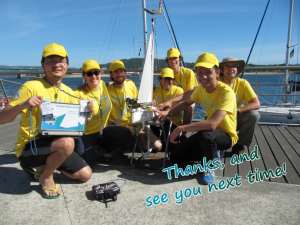
Many thanks to everyone who supported us, especially by joining our crowd funding campaign: Thanks Alistair Lynn, Tim Miller, Tobias Schnieder, Harry Cutts, Gan Soon Sun, Matt Brown, Fiona Collins, Arnaud Wiertz, Kerrine Lee, Andy Sprot, Bob Preston, Alex Ziang, Lee Yong, Duncan Ross Russel, Alessandro Romano and Simone Provenzano.
We are also very grateful to the University of Southampton, with the funding of the EEF we were able to focus on building our boat, and bring all the spare parts that kept our boat going.
Finally, our thanks go to the organisers of the competition, for making this adventure possible!
A more detailed description of our adventure can be found in our blog, as well as all our software and details of our boat build.
Now with many new ideas we are starting our preparations for the next competition – if you want to join us:
We meet every Thursday 6 pm, new members are welcome to join us from the beginning of the new term! Check our blog, facebook page, or twitter account for the location and dates of our introduction meetings.
Blog: https://sailrobot.wordpress.com/
Facebook: http://www.facebook.com/maritimeroboticssouthampton/
Twitter: https://twitter.com/sotonsailrobot
All posts by Stephen Turnock
Government VIPs visit Maritime Robotics Lab
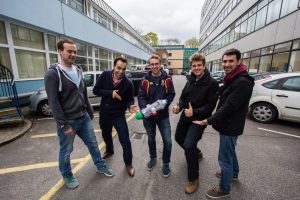
Recently, the Maritime Robotics Laboratory of the Fluid Structure Interactions Group hosted visitors from the Council for Science and Technology, Cabinet Office Analysis and Insight Team and from the Government Office for Science. They were given an overview of the development of maritime autonomous and robotic systems, developments in sensor technologies, and future directions of research in the field. The visit was supported by Dr Jon Downes, Dr Nick Townsend, Dr Blair Thornton and Prof Ajit Shenoi.
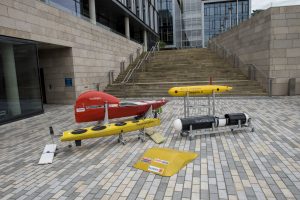
The MRL’s fleet of vehicles was on display as well as the excellent facilities within the Lab within easy access of B185 for trialling performance in the new towing tank.
Flapping with Fleur
MIT student Fiona Grant spent her summer internship in FSI working with Drs Nick Townsend and Gabe Weymouth working on the Maritime Robotics Lab vehicle Fleur. She uses wave energy to self propel herself into or with the waves. Fiona’s report below details some of her activities. We enjoyed her company and that of our five other interns and are grateful to our funding partners for their support and in particular the University’s EXCEL scheme.
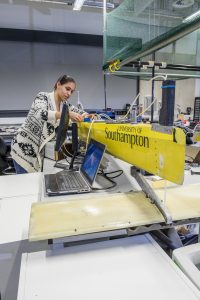
This summer I worked on a project studying the behavior of flapping foil systems. Flapping foils are devices modeled on the swimming mechanism for cetaceans and many fish. These devices have been widely researched, and it has been shown through experiments and simulation that flapping foils can be used to both harvest energy and produce thrust. The relationship between the magnitude and phase of the foil heave and pitch motions defines these two modes. Flapping foils have been successfully implemented in several full scale applications, including ships and wave energy converters (WECs). Currently, the optimal control and stability of flapping foil systems is being investigated, and more research is needed to solve this problem.
The system for this project was a model vessel with a pair of flapping foils attached at the stern. The goal for the summer was to gain an understanding of the dynamic behavior of the system and design a velocity controller for the vessel. I began by modeling the dynamics of the vessel and a single foil in calm water. I then worked on setting up the hardware, LabVIEW code, and driver software to control the linear motor that actuates the foil. In the final two weeks, we were able to run tests in the towing tank and collect data on the open loop response of the vessel and foil system for a range of frequencies and amplitudes.
This internship was a great experience. I was able to put my knowledge of control theory and experimentation techniques into practice and affirmed my desire to study control systems in graduate school. Throughout the internship I was able to work with computer simulation, hardware and software integration, and model testing. During my project I had guidance from my supervisors, but also a level of independence that allowed me to explore the topic and make my own choices about the research. I now feel more prepared for graduate school and excited about continuing my studies.
Catching the wave -exciting opportunities in ship science and maritime engineering
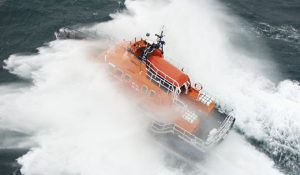 Our next University open day is rapidly approaching on the 3rd and 4th of September. We will be providing a range of activities associated with our ship science degree programmes including displays around our recent 4th year group design projects as seen in the Faculty design show and weather permitting displayed on the lawn in front of B176 including our very own foiling research catamaran.
Our next University open day is rapidly approaching on the 3rd and 4th of September. We will be providing a range of activities associated with our ship science degree programmes including displays around our recent 4th year group design projects as seen in the Faculty design show and weather permitting displayed on the lawn in front of B176 including our very own foiling research catamaran.
Register Here
Staff and students will be on hand in a drop in room to discuss the many opportunities that a Ship science degree programme offers and our flexible choice of themes in naval architecture, yacht and small craft, offshore engineering amongst a number.

Recent and not so recent graduates are welcome to catch up and to see our exciting new Boldrewood Innovation Campus including visits and demonstrations of our 138 m long, 6 m wide and 3.5 m deep hydroscience towing and wave tank. Please explore some of our recent activities reported in this blog.
Our admissions team will give a number of presentations through the day and can answer detailed questions.
All are welcome and we would particularly encourage those who maybe are not aware of the exciting opportunities in the maritime engineering sector. If you have potential interests in mechanical engineering or aerospace then please visit the Boldrewood campus and find out some more!
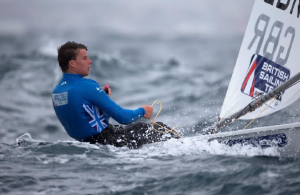
Sport for all
International Sports Engineering Conference in Delft
The 11th ISEA conference: “The Engineering of Sport 11’” took place in Delft, Netherlands between the 11th and 14th of July 2016. The conference, widely recognised as the leading sports engineering conference, was attended by many representatives of well-known companies such as Adidas and Sunnto as well as academics from word class universities. Four PhD students from Southampton Performance Sports Engineering Laboratory (within FSI) together with Dr Chris Phillips, Prof Dominic Hudson and Prof Stephen Turnock attended the conference.
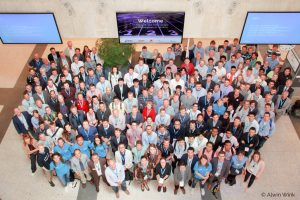
The conference started with a tour of TU Delft Sports Engineering Institute and Delft University of Technology laboratories, after which all delegates enjoyed themselves over welcome drinks on the main square of Delft town.
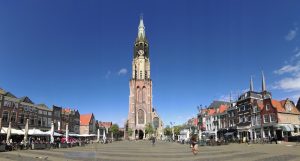
During the conference, as many as 165 papers were presented. The variety of topics and speakers in three parallel sessions at all times, ensured that everyone found a talk related to their area of work. In between the presentation, visitors could enjoy interesting exhibitions from various sports companies and poster sessions.
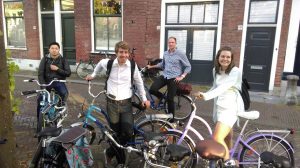
University of Southampton’s PSE Lab presented four papers on a broad variety of research with topics ranging from swimming technique monitoring techniques presented by Scott Michaels, who used cap-mounted tri-axial accelerometer to measure the distance, lap times and stroke rates in swim training to kayak race prediction algorithm by Adam Higgens. In his paper, Adam presented the output of his BEng project on the simulator for sprint kayak racing allowing the prediction of race times based on the physiological capabilities and mass of a given athlete. On the winter sports side, Chen Gong presented his work on the analysis of performance indices for simulated skeleton descent. As part of his PhD, Chen is developing a three degree-of-freedom simulation to analyse the influence of different control strategies on the descent time of a bob-skeleton. The paper outlined the effect of control variables in the search of optimal controller design. Prof Turnock presented a paper on Human- Fluid –Structure Interaction for the International Moth, in which both the the impact of foil deflections and dynamic sailor motions were analysed to better understand their influence on the performance of a foiling dinghy. The papers are all available on-line as part of Procedia.
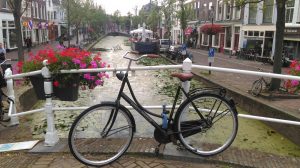
The conference provided a great opportunity for networking with both well-known academics as well as other PhD students from other universities. All delegates took part in a fun sports evening where they could choose from playing tennis, football or ultimate frisbee and meet their teammates over an informal setting. There was also a chance to try your strength at a special Survival Run held at the university sports complex!
The English and penalties
Southampton Team Hydro flies on Lake Geneva

For the second year the Maritime Engineers and Ship Scientists amongst others from the University of Southampton have taken part in the HYDRO challenge on Lake Geneva and as recently reported by the University.
This year their foiling catamaran performed strongly as noted on their facebook page excerpted below. Many congratulations to all involved and grateful thanks to all those who sponsored the team! Onwards and upwards for 2017…
HYDROCONTEST FINAL UPDATE:
Well it’s all over now! The team is currently waiting at Calais to board a ferry back to the UK, and we’re all happy to be heading home after a wonderful experience!
Just to recap:
Lightweight race: 6th
Heavyweight race: 4th
Endurance race: 4th
Communications Prize winners
That’s it for our coverage of the Hydrocontest for now, though stay tuned for thanks to our sponsors/partners, and for some unseen photos and videos that we didn’t have time to show you!
Once again, thanks for your continued support, and we can’t wait until we can do it all again next year!
Southampton's sailing robot seeks funds
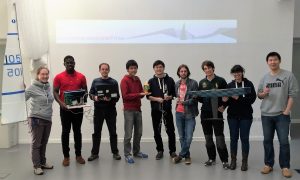
Founded in Autumn 2015, the Southampton Sailing Robot Team is well on track to sending the first Southampton Team to the World Robotic Sailing Championship 2016 in Portugal.
The competition consists of a set of challenges around sailing racing and data acquisition with autonomous vessels, moving towards persistent monitoring of our oceans.
VIDEO: https://youtu.be/KBZwdgfSnao
The students from Ship science, Engineering, Electronics and Computer Sciences, and the Faculty of Business, Law, and Art are currently crowd funding to supplement their competition cost and generate a starting budget for the next year.
A few more days to go, and £300 needed, maybe you are interested in donating to send them to Portugal – and receive rewards from stickers and postcards to joining for a Robot Boat Test day and getting a lesson in remote controlled sailing?
This year the Southampton will participate with a one metre boat in the Micro-Sailboat class, solving the challenges of sailing on a portable platform. Maybe you have already seen them testing their boat on campus, in the Southampton Common, the Itchen River, Eastleigh Lakes or the Solent. The boat regular gets attention, especially of passing by children who are fascinated by the small sailing boat.
Photos: in action
Sailing brings some special challenges: On the building side they have to make sure the electronics are waterproof, the boat doesn’t leak and that it is fast and reliable. On the software side, sailing brings some special routeing limitations: Whilst the next waypoint may be straight ahead, it can not be reached if the wind is coming from that direction! The sailing robot has to detect the wind direction on board and plan where it will tack to reach a waypoint located upwind.
Besides blogging about their endeavour, the Southampton Sailing Robot Team are making their work completely public. This means any sailing enthusiast or student working on a related project can easily get a sailing robot once they have a suitable sailing boat, based on their description of the electronic systems and the available firmware.
BRIDGES to Europe
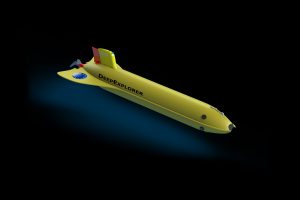
It is interesting to see that the FSI based project BRIDGES Bringing together Research and Industry for the Development of Glider Environmental Services has been featured as one of 24 case study projects across the EU by the Russell Group of top UK research Universities as part of its support for the UK to Remain in Europe.
Quoting from the Russell Group overview
The UK should remain at the heart of a modernised, competitive and outward-looking European Union to drive world-class research and innovation at our leading universities.
Research and innovation are global pursuits and are most effective when ideas and people are mobile across borders. The free movement of talent, the networks, collaborations, critical mass of research activity and funding that we gain from EU membership contributes to the competitiveness of our leading universities and the UK economy as a whole.
The Fluid Structure Interactions group consists of around 80 academics, researchers and graduate students drawn together from around the world. We come from many different countries, different backgrounds but are all focussed on the pursuit of academic research and educating the next generation of leading maritime engineers.
We collaborate extensively with colleagues throughout Europe, we educate many European students alongside UK nationals on our undergraduates and MSc programmes, and we welcome many European nationals as part of our staff and postgraduate students.
As Head of Group I just want to affirm my appreciation of the contributions of our multi-cultural and diverse research community in FSI to our on-going work and to repudiate the negative tone of the Referendum campaign. The last article by Jo Cox, MP sums up very well the very many benefits we collectively gain from an open and outward looking approach to the world.
Better hull performance
Dr Charles Erzan Badoe represented FSI at this year’s hull performance and insight conference (HullPIC), held in Castello di Pavone, Italy. The conference was aimed at recent developments in standardizing sensor technologies, merging of big data as well as applying uncertainty analysis, hydrodynamic modelling and extrapolation.
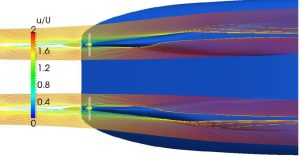
The conference drew together ship owners, operators and performance monitoring companies. The ISO-standard was also introduced, aimed at entering into a more robust performance based contract regarding measurement of changes in hull and propeller performance. The standard will also provide guidance when a maintenance such as hull cleaning, propeller polishing or repainting is needed.
The presentation by Dr Badoe focussed on the impact of hull-propeller –rudder interaction on ship powering assessment. The work investigated the different analysis methodologies that can be applied for computing hull-propeller-rudder interaction. The sensitivity into which the interaction between the propeller and rudder downstream of a skeg is resolved as well as varying the length of the upstream skeg were also discussed including techniques to consider in such computations. Throughout the work, the importance of hull-propeller-rudder interaction for propulsive power enhancement was demonstrated.
Battle of Jutland, the Navy's bloodiest day
For those fortunate to see the recent BBC programme presented by Dan Snow, that investigated the differences in Naval ship performance between the British and German vessels, there were some excellent footage of the Boldrewood Innovation Campus and was mentioned in a University press release.
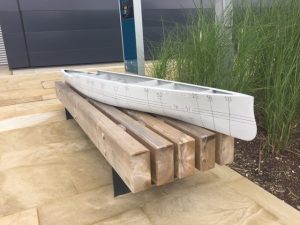
Dr Jon Downes and Prof Philip Wilson worked closely with the production company since the start of the year and are particularly grateful for the unacknowledged support of FSI/Ship Science Alumni Dr Pat Couser of Bentley Systems in the modelling of the sinking of HMS Queen Mary using the Maxsurf software suite (https://www.bentley.com/en/products/brands/maxsurf) as shown in the film, and also the fine work of Allan Thompson in the construction of the physical model of HMS Queen Mary. This model part funded by the Faculty of Engineering and Environment will be used as part of the Ship Science teaching programme.
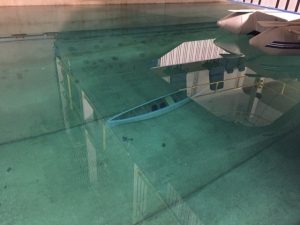
For those who watched the programme that seemed to confirm the long held view that it wasn’t the engineering of the British ships that was at fault, once the model took on sufficient damage to sink she went to the bottom so fast and so steeply that the one shot underwater video opportunity missed the descent and subsequent impressive impact!
